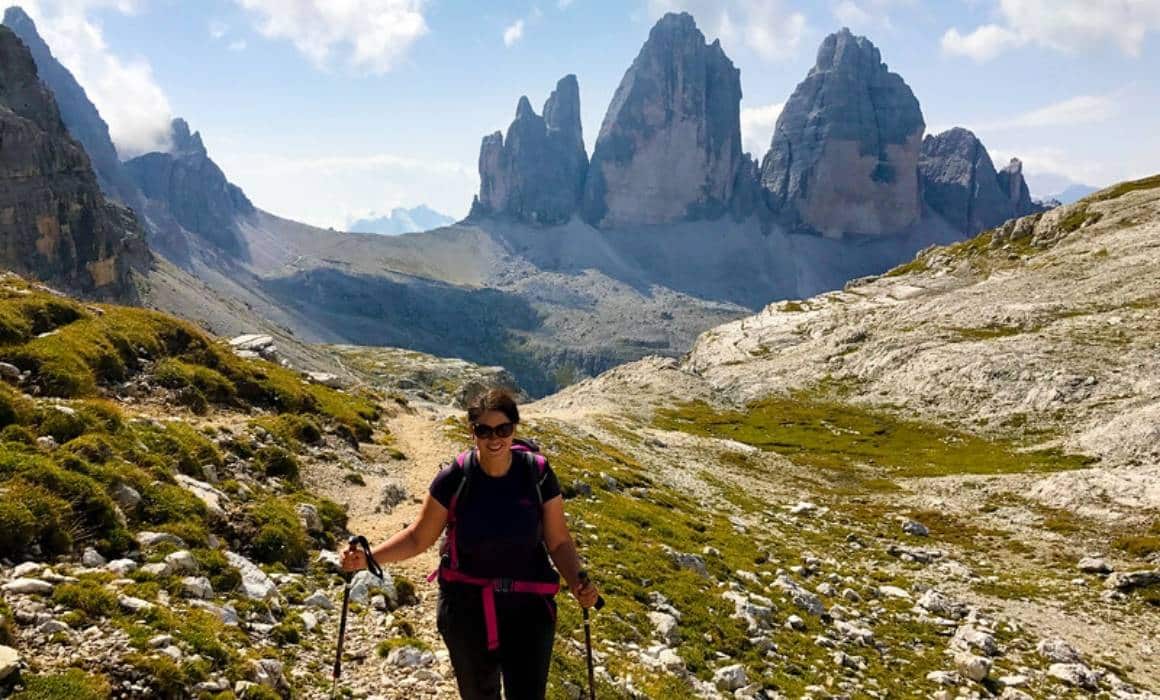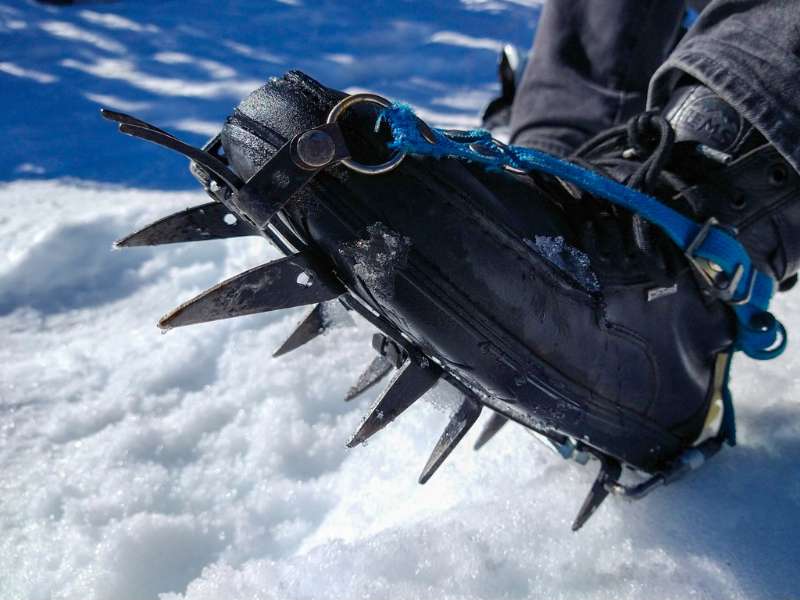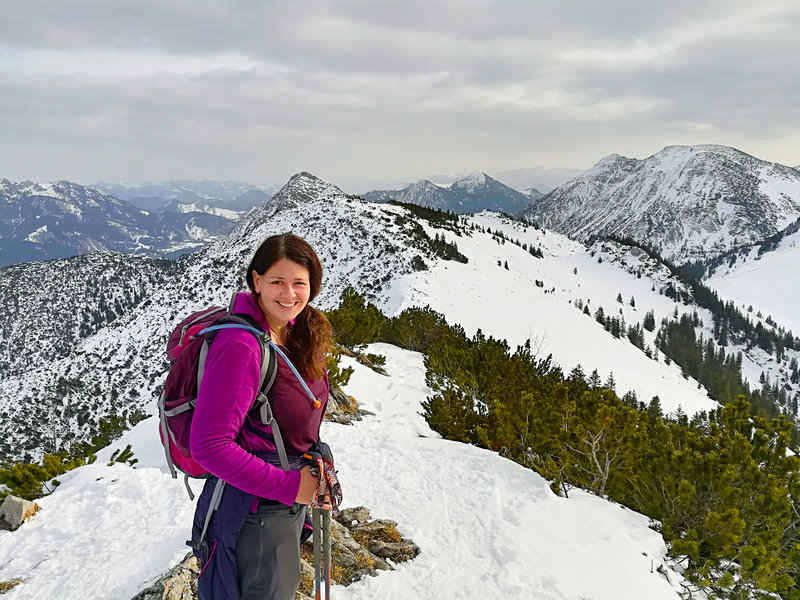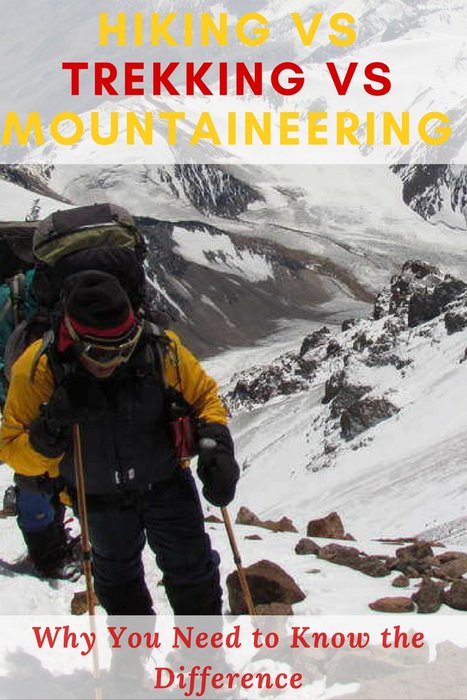Many people tend to use the words hiking, trekking, and mountaineering as if they were all the same thing. While they’re similar, there are important distinctions as well.
Table of Contents
So why is it important to know the difference between hiking, trekking and mountaineering?
The most important reason is safety. Knowing the difference between these outdoor activities allows you to choose the right outdoor adventure for you that’s suitable for both your physical abilities and skill level.
The main difference and the easiest way to explain how hiking, trekking and mountaineering are different is to distinguish each term and to categorize them by difficulty.
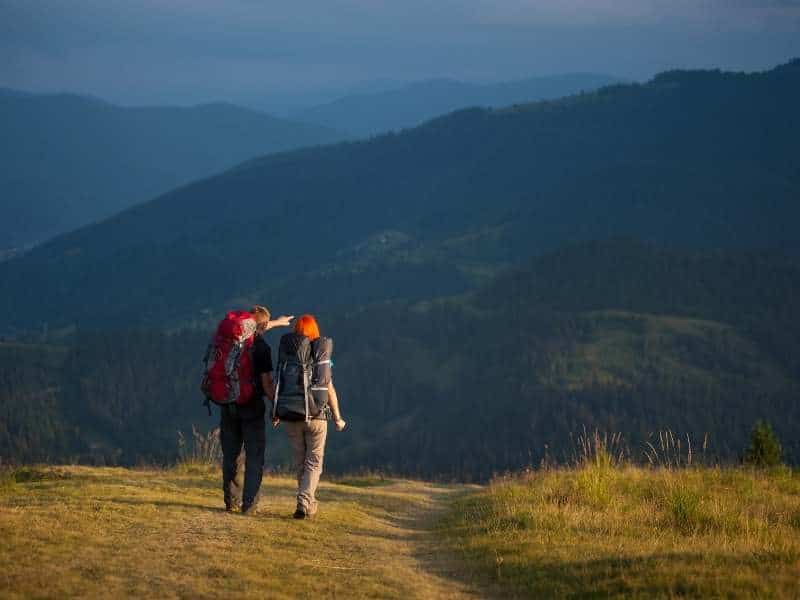
Hiking
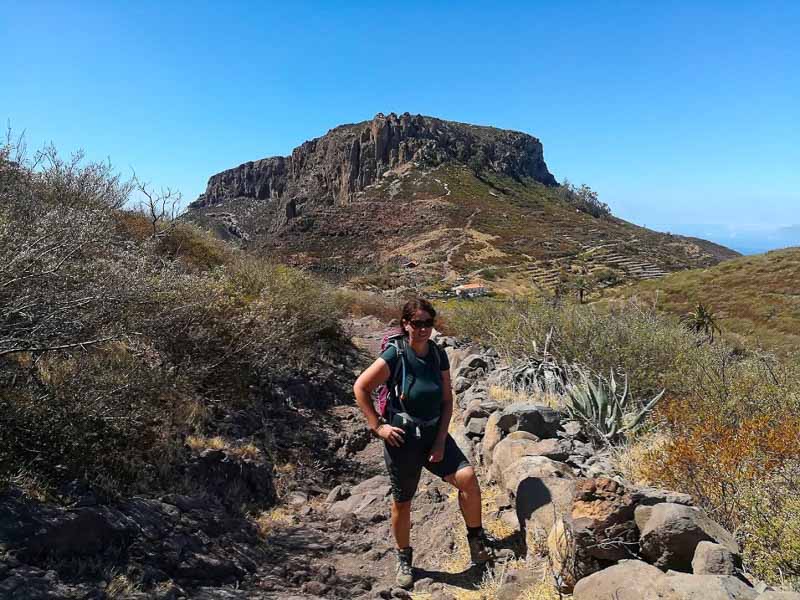
The easiest of hiking, trekking and mountaineering is hiking. Hiking is characterized by:
✔️ easiest of the three
✔️ easy trails require no previous experience
✔️ walking on well-marked trails (but not always)
✔️ short, lasting anywhere from a couple of hours to a full day
✔️ hiking trails may be flat to steep slopes
✔️ usually of easy to moderate difficulty, although you can definitely do tougher day hikes on uneven terrain
✔️ doesn’t usually require any technical skill or technical knowledge but can still be physically challenging
✔️ you can still reach a mountain summit while hiking, but they’ll usually be at a lower elevation vs trekking and mountaineering
✔️ in Europe, hikes are classified according to the Swiss Alpine Scale (SAS) – proof that hikes can be very difficult
✔️ requires minimal equipment (compared to trekking and mountaineering) – see our Day Hiking Packing List for what to bring. If you’re hiking in winter, then I also recommend bringing a thermal blanket, microspikes and hiking poles.
Examples of hikes are the ones listed in our Best Hikes in Joshua Tree article.
You may also hear the term “multi-day hike” or “long-distance hikes” “long-distance trails” “multi-day trips” or “multi-day hiking”
These terms refer to walking on trails that meet the above conditions for more than one day.
Examples of multi-day hikes are:
- hiking the Lycian Way in Turkey
- hiking in La Gomera in the Canary Islands (me pictured above)
- 8-day coastal hiking tour in Cinque Terre, Italy
- a popular trail like the last 100 km of the Camino de Santiago in Spain
- Tour du Mont Blanc takes places place in 3 countries!
Related Reading: Best Trekking and Hiking Backpacks.
How to Start Hiking
If you don’t have much hiking experience, check out our Hiking for Beginners article. Or sign up for my online course How to Start Hiking and feel Amazing From Your First Hike.
You’ll want to start with shorter, flatter hikes and work your way up from there. Also, if you’ve never hiked before, it may seem difficult the first few hikes that you do. But stick with it. It gets easier as your physical condition improves.
And you’ll be surprised at how quickly you progress, especially if you’re doing additional cardio workouts between hiking. It’s important to find a balance between challenging yourself and not overdoing it.
When hiking in Europe, use the above-mentioned Swiss Alpine Scale to find a hike appropriate for you – a T1 when you’re just starting.
Related Reading: Our Top Hiking Gear Recommendations.
Trekking
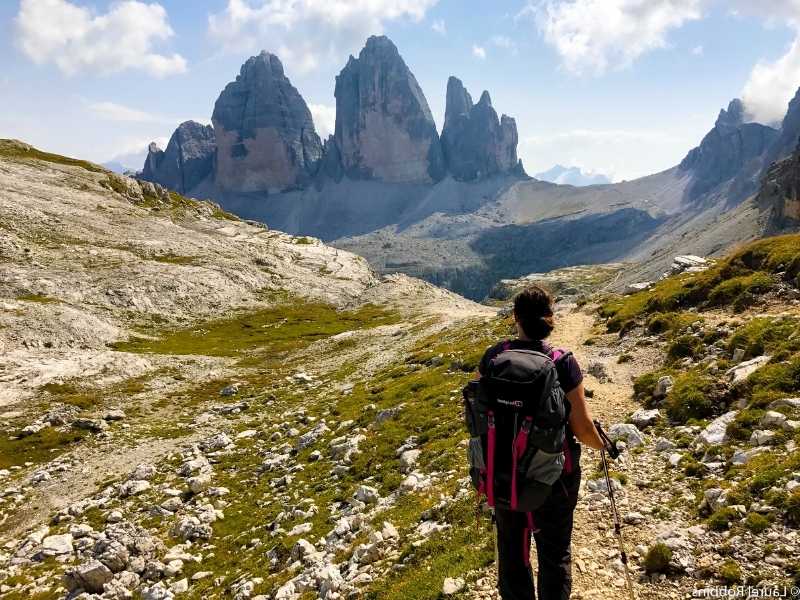
Trekking is more difficult than hiking but much easier vs mountaineering in terms of difficulty. It’s characterized by:
✔️ multi-day trips, some are several weeks or longer
✔️ usually on uneven or rough terrain, i.e. could involve walking over boulders
✔️ pack weight is usually heavier as you’re carrying more stuff, including food and carrying your own gear and sleeping bag versus having it carried for you (but not always)
✔️ trekking poles are recommended to help you on rougher terrain
✔️requires sturdier hiking boots due to heavier pack weight and mountainous terrain
✔️ requires a higher fitness level due to the heavier pack, terrain and length of the trip
✔️ usually stay at mountain huts or guesthouses (when it involves camping, that’s called backpacking)
✔️ treks usually start in one place and end in a different one
✔️ treks may be at high altitude but not always
✔️ some treks take you to the highest mountain, like Kilimanjaro, where others that take you to the highest peak, would be mountaineering, like climbing Mount Everest.
✔️ the distance can vary anywhere from ~40 km to long distances up to several hundred kilometres/miles
Examples of multi-day popular treks include:
- Climbing to the summit of Kilimanjaro
- Gran Paradiso in the Italian Alps
- the Haute Route in the French and Swiss Alps
- the Alta Via 1 in Italy’s Dolomites
- Everest Base Camp Trek (me pictured below at Base Camp)
The Tour du Mount Blanc gets called both a multi-day hike and a trek. I’d personally call it a multi-day hike since the terrain isn’t technical. You can make it easier by doing it as a self-guided tour and arranging to have your luggage transferred.
How to Start Trekking
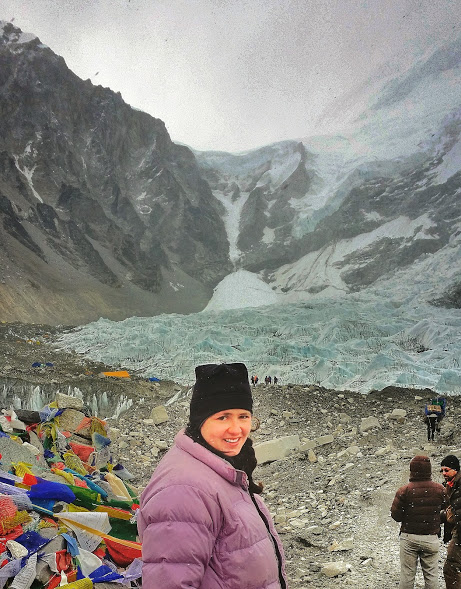
You’ll want to start by doing some hiking trips first. Gradually build your way up to longer and more challenging day hikes on uneven terrain before you do a multi-day trek.
It’s also a good idea to add extra gear to your backpack. This is in preparation for trekking when your pack will be heavier, and it’s important to build up strength.
Then consider doing a multi-day hike first. For your first trek, you may want to consider just doing a 2-day overnight trip.
Mountaineering
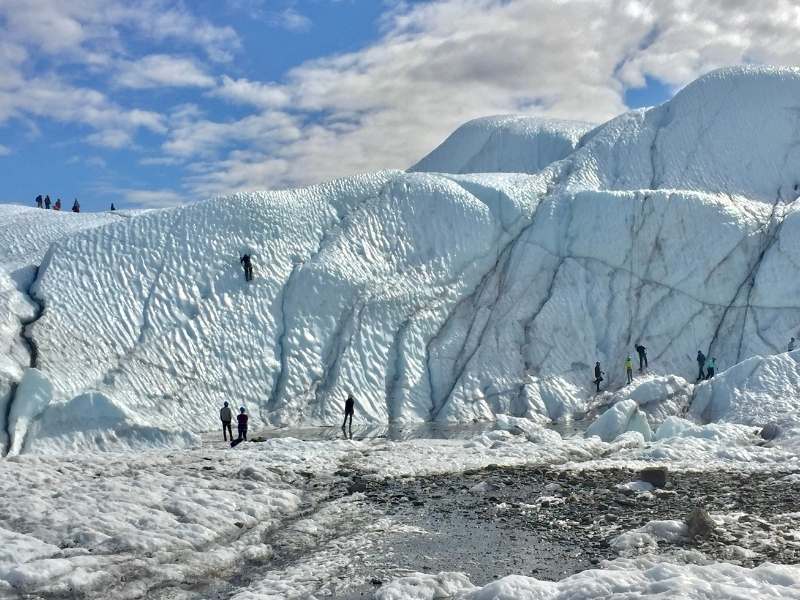
The most difficult of hiking, trekking and mountaineering is by far mountaineering. You can’t just go mountaineering as you could go for an easy hike. You require technical skills and experience and should always go with someone else.
You also need to be in excellent physical health since it’s so demanding.
Mountaineering is characterized by:
✔️ technical climbing and a higher difficulty level of trekking that may take you to higher elevations and higher peaks where there are low oxygen levels, making it even more difficult. In some cases, like when climbing Mount Everest, most mountaineers rely on supplemental oxygen
✔️ could range from a day mountaineering trip, to a weeks long mountaineering expedition, like climbing K2
✔️ may include glacier crossings, like our glacier tours in the French and Italian Alps that you can do with a local guide
✔️ mountaineering involves technical climbing up rock and cliff faces that are impassible any other way
✔️ requires special equipment and technical gear, i.e. crampons, ice axe, ropes, climbing harness, mountaineering boots
✔️ in some places, you need to be strong enough to be able to endure long hours of ascending with low levels of oxygen
✔️ due to the higher altitudes that mountaineering involves, you’ll often encounter snow, so you need to ensure you’re prepared to be in the cold and prevent ailments like frostbite. You should always carry an emergency thermal blanket.
Examples of mountaineering are:
- summiting Mount Blanc (not the Tour du Mont Blanc) but the actual summit,
- summiting or attempting to summit Mount Everest
How to Get Started in Mountaineering
If you’re interested in getting into mountaineering, the best way is to take some classes first, as you need a high level of technical skills and experience to practice those skills.
Your local alpine association is a good place to start. I..e in Canada this is the Alpine Club of Canada. You’ll also need to be in excellent physical condition.
You’ll also want to do single day trips with a low technical difficulty while you’re learning and work your way up to more technical climbs.
You may also want to start off in summer with rock climbing, then work your way up to mountaineering in winter, when in addition to having to have technical expertise about glacier crossings, you’ll also likely experience harsh weather conditions.
Related Reading: 64 of the Best Adventure Books Ever Written.
Hiking, Trekking and Mountaineering: My Journey
I definitely do far more hikes than treks, simply due to time. I do a day hike almost every weekend in the Alps. But even when hiking, I try to include some challenging ones – like choosing a T4 or T5 (the most difficult of hikes in Europe).
I also LOVE boulder fields. This is much easier since I moved to Bansko and have Pirin National Park at my doorstep.
I’m also a huge fan of trekking and have trekked all over the world. I do a multi-day hike or trek every year. This year it was one in the Rila Mountains in Bulgaria, and the Lycian Way in Turkey and Kilimanjaro in Tanzania.
I think there are so many benefits to being on the trail for days at a time vs being a weekend warrior as I usually am. Check out How a Hiking Trip Can Change Your Life and How to Change Your Thoughts While Hiking.
While I love doing via ferratas, I’ve only dipped my toe into mountaineering, having tried ice-climbing with an instructor and done a Mont Blanc glacier walk, which I loved. I’d like to explore mountaineering more, and am getting into ski touring this year, but plan to do it gradually and at my own pace.
